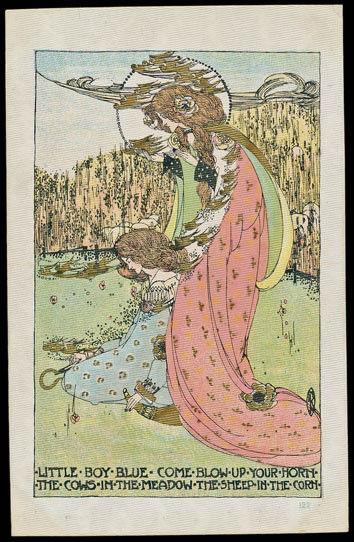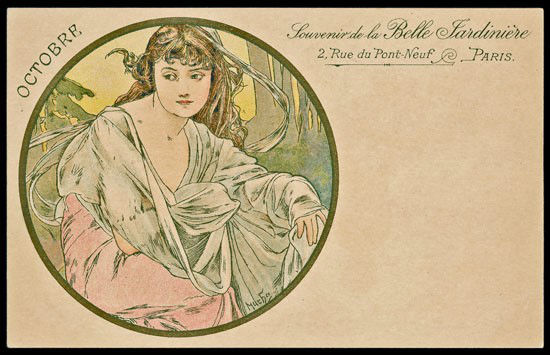How to value old postcards
The value of old postcards is affected by many variable factors, but demand, condition and rarity often have the greatest influence on how much a postcard’s worth.
As experienced valuers of collectables, our experts are often asked: How do I value my vintage and old postcards?
Unless you have years of experience, the short answer is with difficulty. Even then, assessing the value of a postcard collection can be a timely process.
There is, of course, no reason why you cannot gain an impression of a collection’s value – and this article aims to guide you through the steps you must take to do so. Hopefully, it will help you to assess postcards in a more detailed manner.
If you are planning to insure a collection, this postcard grading guide could help you gain a better understanding of the value that needs to be placed on it. It should also allow you to gauge whether or not it is worthwhile taking your collection to be assessed by an independent expert or auction house, such as the services offered here at Warwick and Warwick.
If you do need assistance after reading this guide, please do not hesitate to contact our postcard valuation experts, who’ll be happy to provide their assistance free of charge.

Childhood Memories: A beautiful postcard by Scottish artist Jessie King (1875 – 1949) from a set of 6 depicting nursery rhymes in an art nouveau style.
Assessing an old postcard’s value
How to establish a card’s age
The first thing to do is to determine the approximate age of the cards, as the vast majority of cards issued after the 1960s have very little value. The postmarks on the reverse of the postally used cards are a reliable guide. Size also helps as cards larger than 5″ x 3″ were only popular in this country from the 1960s onwards.
You now need to look at the 5″ x 3″ cards produced in the 1960s or earlier. However, it is important to realise that the value of these cards is not determined by their age and that 90 per cent or so of the average collection will have very little value. So, which cards do have value?
What type of card is it?
Postcard collectors are roughly divided into 2 camps;
- Those collecting topographical cards and social history
- Those collecting subject cards (Often called ‘topicals’ in the US)
Topographical cards
Topographical postcards and those depicting social history are by far the most important collecting area in the UK.
Collectors like to assemble a record of a geographical area, whether it be where they live or where they were born. They enjoy viewing street scenes showing how the street appeared decades earlier. They enjoy seeing cards of steam trains at the local station, trams on the streets, the local dairyman, the village inn, the postman delivering letters on his round and other such images of social history.
Read more : 2018 U.S. Stamp Program
The more detailed or ‘animated’ a card is, the more a collector will want it for their collection and the more valuable it will be.
Topographical cards fall into two broad categories:
Real photographic postcards: Printed direct from the negative and, in the ‘Golden Age’ of postcard production from 1902 to 1918, these cards were often produced in very limited numbers by local photographers. Such cards are scarce. Well-animated types, with children playing in a village centre or an early motorcar close-up, can sell for £15 to £30 each. A close-up of a steam lorry or an early omnibus in a town can be worth £40 to £70. A Suffragette procession or gypsy encampment can sell for over £100.
Printed and coloured topographical cards: These were produced on a printing press and lack the definition of the real photographic card. When viewed under magnification, the printing screen can be seen as a system of dots. Such cards are more common than real photographic ones and command substantially reduced values.

French Classic: This ‘October’ postcard is one of 12 from the ‘Months of the Year’ series by the well-known Alphonse Mucha (1860-1939).
Subject cards or ‘topicals’
Subject postcards: Collectors display an interest in a wide range of subjects – including animals, children, comics, shipping, novelty, railways and glamour. But the majority of subject cards do not achieve the intense interest attached to top of the range topographicals.
With subjects such as children and glamour, the postcard artist is an important factor in assessing a card’s value. Louis Wain produced a large number of cat designs and his work is widely collected. Art nouveau and art deco glamour cards by artists such as Alphonse Mucha (pictured in the image above) and Raphael Kirchner (pictured in the image below) can sell for three-figure sums, as long as the condition is good.
Postcard grading is far more important with subject cards than with topographical cards, as the market is smaller and the collectors tend to be more sensitive to the condition of the card.
Foreign cards: The average British collection contains very few foreign cards. At the present moment, there is a lot of interest in Chinese cards, as these constitute a rapidly expanding market. If the card is postally used, there is a chance that the value of the postal markings can outstrip the value of the image on the front of the card. The same is true for cards emanating from areas where native usage was small, such as some of the Pacific Ocean islands. Many British collections contain cards sent home from British troops serving in France and Belgium during the First World War, but these cards are common and rarely have much value.

Superb Detail: An art nouveau style postcard from the ‘Roma’ set by prolific postcard artist Raphael Kirchner (1876-1917).
How much are the stamps worth on an old postcard?
“Are the stamps on these postcards of any value?” This is another question we are often asked. Generally, the answer is ‘no’ because postcard mailing from most countries was prolific. The stamps needed to cover the postage rate were also produced in vast quantities and are still very common.
However, occasionally we encounter a card with a desirable postmark, such as those mailed in advance for delivery on Christmas day, in Edwardian times.
Knowing this takes expert knowledge, which is why it is essential to have your postcards professionally assessed by a valuer who has a detailed understanding of both postcards and philately.
Read more : 22 Awesome Animals With Three Letter Names
At Warwick & Warwick, we have a free postcard valuation service. Please email us or call 01926 499031 to book an appointment.
Or see our How to sell postcards guide for advice about how to achieve a quick and efficient disposal at current market levels.
How to Grade the Condition of Postcards
As you would expect, the condition of an old or antique postcard is an extremely important factor in relation to its worth – just as it is with old coins and stamps.
Whilst postcard grading is a subjective area, cards which are worn, damaged or dirty tend to be less desirable. If you acquire a damaged card, it may have little commercial value and is best thought of as a space-filler.
When buying cards, be wary of descriptions which include terms such as ‘average’ or ‘good for its age’ because this usually indicates the card is in a ‘fair’ or worse condition.
The following are commonly used postcard grading terms, accepted by dealers and collectors alike, that are used to described the condition of old, antique and vintage items:
Mint: A perfect card which is just as it was when it was issued. As new, unposted and in a pristine state, without bends, creases, writing or postmarks. A clean and fresh card with sharp corners, seldom seen and a description which is not normally applicable to vintage cards.
Near Mint: Like Mint, but showing some very slight aging or discolouration – probably from being in an album or other unprotected storage format. Otherwise, still a clean and perfect card.
Excellent (Ex): A postcard without obvious flaws and similar to Mint in appearance, without bends, creases or pinholes. It may be postally used or unused, but the corners of the card are square, not rounded or blunt. A clean, fresh card on the picture side, it may have writing and/or a postmark on the address side only, which does not detract from its appearance. When viewed at an angle or under strong light, it may show some signs of aging, a lightening of colour or the hint of album marks. In terms of pricing, this is usually considered as the baseline condition.
Very Good: Like an Excellent postcard but the corners may be slightly rounded and a few almost undetectable creases may be present. A very collectable postcard with a fine appearance, which may have writing and/or a postmark on the address side. If it is an early undivided back postcard, writing may appear on the front. The card may also have minor defects (such as album marks, signs of age and handling) but should show little or no discolouration. Most collectible cards are in this Very Good condition and should be worth about 20-25% less than an Excellent postcard.
Good: A postcard which has corners that are noticeably blunt or rounded with slight bends or creases, still collectable even if the condition is less than Very Good. Used or unused and showing noticeable defects (like handling or wear), it may have slight creasing and minor postal damage but this will not be detrimental to the overall appearance. The card may have writing and/or postmarks on the front or back (address) side or other noticeable album marks or discolouration. A postcard in this condition may be worth 40-50% less than one which is classed as being in Excellent condition.
Fair: A postcard which is intact but with writing or a heavy postmark cancellation which affects the picture and spoils its appearance. It may have noticeably rounded corners and some creasing or edge damage, but it is still in a collectable state. The value would depend on rarity, but cards in this condition would not appeal to all collectors.
Poor (P): An incomplete postcard which shows an image that has been seriously affected. Classed as a space-filler and worth very little.
Get your postcard collection valued free
If you own a postcard or collection and you think it might be valuable, it’s always a good idea to have it professionally appraised by experts with years of experience. If you intend to sell it at auction or via a Private Treaty Sale), this will help you obtain a fair price. If you plan to keep it, your insurers will know exactly how much to list it for.
We currently provide a postcard valuation service free of charge. To find out more, please email us – we’ll be happy to offer any assistance you may need.
Back to Guides
Source: https://antiquewolrd.com
Categories: Stamps

